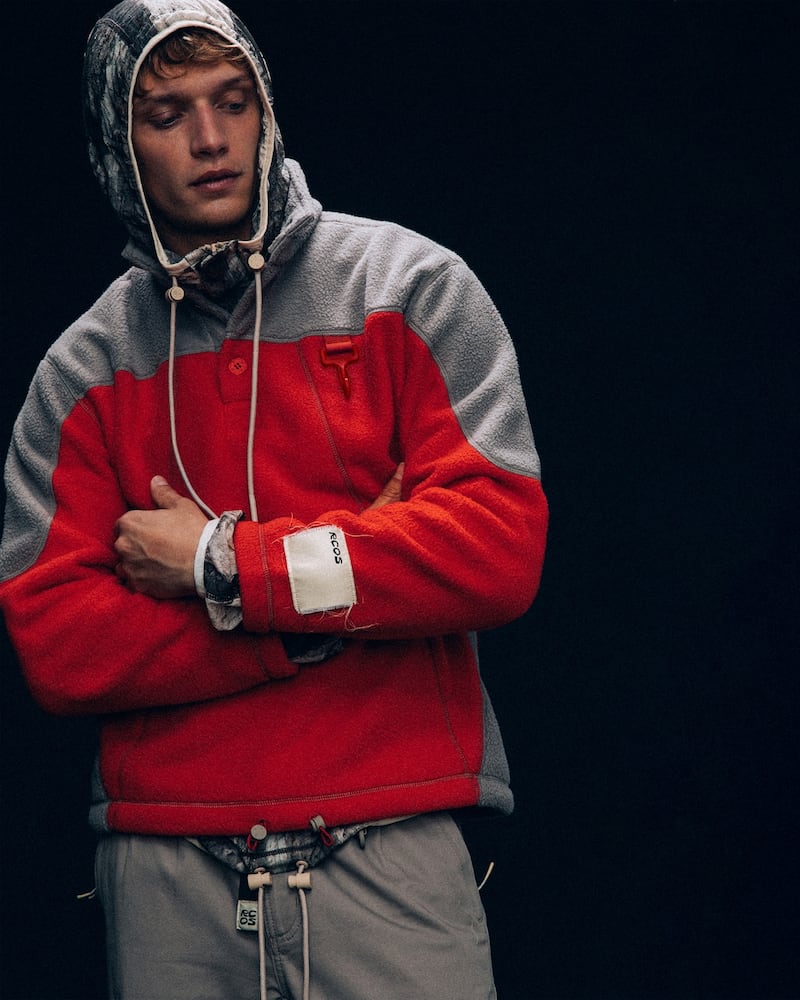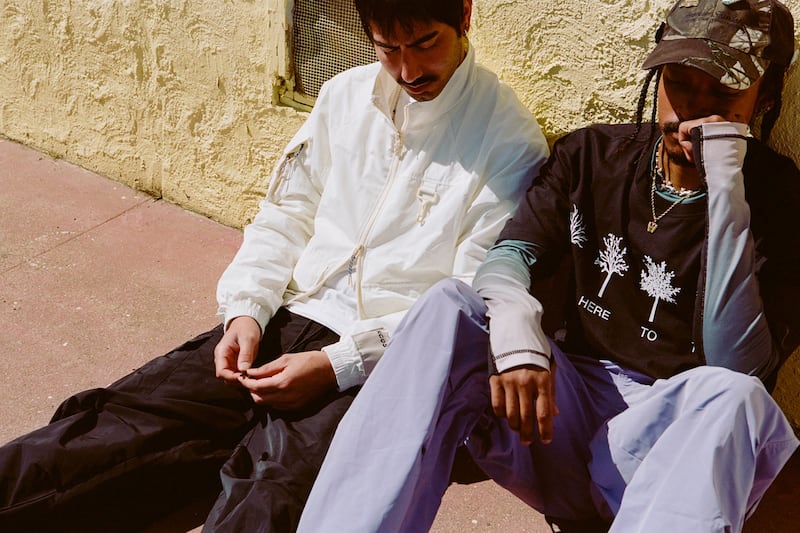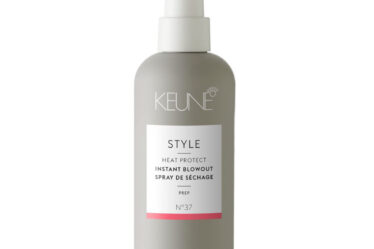
The day H&M’s collaboration with Heron Preston hit the market this March, Roland Adjaye, a 22-year-old South Londoner who works as a brand specialist at Harrods, bought several items.
Adjaye, who is also an online content creator, budgets out approximately £200 to £400 ($262 to $525) a month on clothes, and while high-end labels like Y/Project, Maison Margiela and Issey Miyake are a part of his wardrobe, his go-to for basics has always been retailers like H&M. But he’s been following the retailer more closely since it announced its long-term partnership with Preston last year.
“I was a bit disinterested [in H&M] and it was just a bit quiet from the brand for a long time. Since getting him on board, I feel this is a new era,” said Adjaye, who’s been watching designers like Preston and those adjacent to the late Virgil Abloh since the late-2010s.
This August, he also bought pieces from the retailer’s collaboration with the Jean-Michel Basquiat estate and the designers behind Who Decides War, an American label whose artisanal denim styles are popular amongst celebs and which gained global exposure after becoming LVMH Prize semi-finalists in February. Adjaye says the brand’s founders “are big influences in modern streetwear culture” and impacted his own personal style growing-up.
The author has shared a TikTok.You will need to accept and consent to the use of cookies and similar technologies by our third-party partners (including: YouTube, Instagram or Twitter), in order to view embedded content in this article and others you may visit in future.
Mass retailers have a long history of designer collaborations — only in the past, they tended to be predominately with luxury brands who could lend them a halo of high-end prestige. H&M’s tie-ups with Heron Preston and Who Decides War are among a new wave of partnerships between retailers and small, independent designers focused on young menswear consumers into streetwear, subcultures like skateboarding and trends like gorpcore.
In March, Gap and London-based skate brand Palace released a capsule collection. In August, PacSun and designer Reese Cooper introduced a new outdoor-clothing line together. This month, Fast Retailing will open the first American flagship for its GU brand with an US-exclusive menswear collaboration by Undercover.
“I think menswear has been better in tapping into culture, community and those movements. So I think that we wanted, and needed, to also be able to be in that space,” said H&M menswear designer Ana Hernández.
While these partnerships may serve as short-term revenue drivers for both sides, they can be more than that. For independent designers with high price-points, partnering with a large retailer can provide access to unprecedented resources and new customers who were previously priced-out. For the retailers, these designer collaborations can inform the brand’s in-house design team and potentially become fruitful multi-season partnerships. PacSun’s nearly decade-long partnership with Fear of God is the American menswear brand’s biggest revenue driver, according to Vogue.
“There are small collaborations that will still be able to do this marketing that excites the customer with newness, especially if it’s a trending brand, to drive the customer through the door,” said Jessica Ramirez, senior retail analyst at Jane Hali & Associates.
Menswear’s Aspirational Shoppers
That customer might be following emerging menswear brands but can’t always afford them. Reese Cooper knows it’s unlikely that the young men who comprise his main audience are filling their closets with his eponymous label’s garments when his cargo pants retail for over $600. In 2021, he began developing RC Outdoor Supply, an affordably priced outdoor-clothing line to complement his mainline’s runway apparel.
But by mid-2022, he found himself struggling to develop the line alone with local Los Angeles manufacturers, who could not scale production for his technical outdoor clothing beyond samples. So when PacSun reached out to collaborate that same year, he saw an opportunity to use a larger partner’s resources to fulfil his vision
“A lot of these places worldwide, you don’t just have three taped-seam sewing machines, there’s a place with 1,000 of them,” said Cooper. “I think without their support, it would have been impossible for a long time to unlock the scale that comes with being taken seriously by a lot of manufacturers.”
Within a week of releasing RC Outdoor Supply this August, Cooper said he sold 65 percent of his inventory through his own distribution channels, with some shoppers buying several pieces in one go. Even with his mainline customers, many typically only buy just one or two pieces per season.
“We tend to work with up-and-coming designers because we identify it as something that should be in front of our customer … So helping that designer out in terms of growing their reach, but then also us growing our reach and getting some of their fans into our space,” said Richard Cox, PacSun’s chief merchandising officer.
H&M has been vying to tap more into contemporary culture with its menswear partnerships since 2023, according to Hernández. To that end, it gave Who Decides War’s founders, Everard Best and Téla D’Amore, creative freedom as well as unbound access to resources like its textile lab in Sweden.
For Best and D’Amore, the partnership served as an “exercise” to see how they could translate and scale their design language for the masses with a company that had internal teams who could address every aspect of the partnership.
“In general, this collaboration for us was about growth and just learning how it is to work with a larger team, a larger audience and how to communicate to that audience,” D’Amore said.
Deeper Relationships
Beyond marketing buzz, design collaborators can bring new perspectives to retail partners that reverberate throughout the company. H&M has found that its partnership with Preston, who serves as a creative advisor, had an influence beyond the products they’ve created together.
“I think he really challenged the organisation when it comes to how you can approach your design process,” said H&M’s Hernández. “Allowing yourself to be a bit more organic, changing your mind and not sticking to the full timeline that we usually do.”
For this type of partnership to work, it has to be the right fit for both sides.

PacSun’s Cox said that aside from looking for partners with followings, a reputation for specific product categories that are trending and a desire to speak to a young customer, they also value designers who are ready to become heavily involved with the retailer.
“The consumer and the industry can read into it and know when a designer is doing a collaboration from afar and is not that engaged,” Cox said.
Cooper emphasised that the sub-label is not a quick cash play. He owns 100 percent of RC Outdoor Supply and licences the trademark to PacSun, which handles manufacturing and distribution, and said his aim is to build the brand over time.
These deals can come with challenges. Teaming up with a giant retailer can entail different ways of working than small designers are used to, for example. Cooper had to adjust to designing a collection 12 to 18 months before delivery, rather than a month before it hit the runway, though he said the collaboration allows him to focus on the creative side of the business.
“I really like designing clothes and marketing clothes. I don’t love physically producing them as a passion,” he said. “From a management point of view, it’s a really difficult task.”

There’s also the risk that small labels can dilute their carefully tended brands through mass-market partnerships. Customers of their main lines might not react well to what they perceive as watered-down versions of their normally pricey designs sold at a discount.
Cooper and the duo behind Who Decides War said they weren’t worried about brand dilution. While the items are cheaper and the distribution network is wider, their collaboration products are still limited releases and include pieces at higher price-points that maintain an elevated image. A pair of distressed Who Decides War-esque jeans from the H&M collaboration costs $299, while a taped-seam nylon jacket from RC Outdoor Supply goes for $450. And even when designing down-market, both labels approached the design of their collaborations with the expectations of their mainline customers in mind.
For Best, the experience allowed him to design a collaboration his younger self would be excited about.
“I remember when I was a young, avid fashion fan who wanted to dress like the rappers or idols but didn’t have the funds to do so,” said Best, who remembers buying H&M’s Margiela collaboration when he was younger. “It’s really fulfilling because I know there are kids in high school or middle school who can’t necessarily put together a budget to buy a $1,000 pair of jeans. But when it comes to collaborations like this, you could get a jersey or a hoodie for $50, and that’s really amazing.”


